
Jun 17, 2020 | Staying on Top, UpstateVibe365
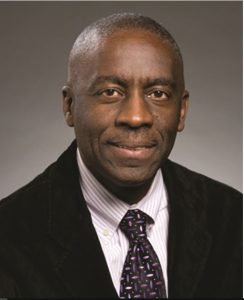
Terence Roberts, Mayor of Anderson and Chair of Ten at the Top
by Terence Roberts, Mayor of Anderson and Chair of Ten at the Top
I was born in 1959 and was the oldest son of William and Linda Roberts. They were black educators at Westside High school in Anderson. As a little black boy growing up in the segregated south, I have vague memories of watching on television the civil rights protests, Vietnam War, the assassinations of Dr. Martin Luther King Jr and John F. Kennedy. So for me there were moments that I could sense my parents’ uncertainty about the future.
Although we have come so far in the last sixty years, our country continues to struggle with the issue of safety. We all want to live in communities that are safe and vibrant. We still have many neighborhoods in the Upstate in which this is not the case. Over the last few months I have often wondered what will be the vague memories of my grandchildren.
I believe it is time to speak up. If deeply cherished values are not to degenerate beyond all recall, apathy must cease. People are aware, of course, that harmful changes are taking place in our society both in attitudes and values. But nobody wants to talk about it. We see the greed and materialism going on in so many aspects of our daily lives and we say nothing. We hear about and see on television the extreme violence and protests that are taking place in large cities and in our small towns. The public outcry in the Upstate will continue unless we take immediate action.
It is time for us to stand up for what we believe in. This is a local issue. I have proposed that Ten at the Top should convene a regional exploratory committee consisting of local government leaders, law enforcement officials, community & business leaders as well as members of our faith community to discuss opportunities to create a united Upstate region where all stakeholders work collaboratively to ensure that we foster a culture that respects and values the lives of our law enforcement officers and all residents. This committee will ask questions, look at best practices and seek guidance. Then my hope is that we form core beliefs and stick to them. Of course, we all must be open for compromise, but remember the old saying, “if you don’t stand for something, you’ll fall for anything.”
There is an anonymous folk saying which goes, “We ain’t what we want to be, we ain’t what we’re gonna be, but thank God we ain’t what we was.” None of us can have the luxury of stopping and sitting down where we are as if our work on this earth is done. We must learn from our past mistakes and press on to greater achievements. In these uncertain times, we must strive to be able to move through pain, anger, doubt, and fear without missing a step!

Jun 17, 2020 | Staying on Top, UpstateVibe365
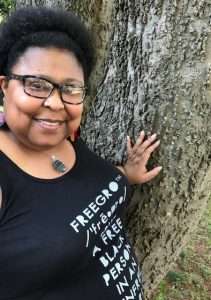
Davelyn Hill, Program Director, Speaking Down Barriers
with Sharon Purvis
Speaking Down Barriers is a Spartanburg-based non-profit that seeks to foster dialogue and trust among people of different racial backgrounds as well as those from different genders, orientations, and ethnicities. The group builds community through affinity groups, offers workshops on diversity and inclusion, and hosts a monthly book club, Reading for Transformation, that selects challenging texts and encourages honest conversations about the ideas presented. The following is a conversation with Davelyn Hill, Program Director at Speaking Down Barriers.
Q: Can you tell us a bit about the impetus for starting Speaking Down Barriers and how long the organization has been in existence?
It began in 2013 as an ongoing community dialogue called “Poetry and Conversation,” which offered a unique opportunity for residents of Spartanburg to share stories and art with one another, building community with people who were different from them. There is no expert in this kind of dialogue. People can learn from the person sitting next to them instead of simply looking to the person who is facilitating the conversation. Many of the poems shared were and still are autobiographical. It is difficult to argue with somebody’s lived experience. This kind of sharing often brings forth empathy instead of division.
It has since been renamed Speaking Down Barriers and formed as a nonprofit (501c3) working across differences of race, class, gender, sexual orientation, national identity, and religion. We offer transformative and healing dialogue alongside the arts to challenge, overcome, and break barriers that separate us. We believe that our differences do not have to divide us. Difference can be a source of our collective strength.
 Q: In this present moment, with the protests in the wake of George Floyd’s death and what feels like a much more significant outpouring of support for the African American community and Black Lives Matter by white Americans than we’ve seen before, has your group been doing anything new or different to get people talking in constructive ways?
Q: In this present moment, with the protests in the wake of George Floyd’s death and what feels like a much more significant outpouring of support for the African American community and Black Lives Matter by white Americans than we’ve seen before, has your group been doing anything new or different to get people talking in constructive ways?
We continue to work in ways that will end oppression and promote equity for all. Our work has not changed. We have been holding dialogues and provided healing opportunities since 2013. We did bring back affinity groups sooner than we planned to meet the needs of the moment and to facilitate in-group conversations that heal and challenge.
Q: Your two primary means of engaging with the community are through your Reading for Transformation Book Club and your community gatherings. Can you give us an example of a barrier being broken down through those programs?
When a retired white woman and an adult black man can share a meal and talk about white supremacy, barriers are broken down. What kind of mental barriers collapsed because they saw each other as people? Being a part of this conversation was healing for me and perhaps others were moved as well. She listened and affirmed, he listened and affirmed. We were all affirmed in our humanity.
When a white person publicly admits that racist comments sometimes come to mind when they are angry and they are actively working on dealing with their implicit bias, barriers are broken down. I begin to trust them a little more because they were truthful, accountable, and not gaslighting me by telling me racism does not exist.
Q: Do you find that you have the same group of people coming to your gatherings? If so, do you feel like that is a good thing, forming a community where dialog can develop over time?
We have a core group of people that attend our events. We believe length of time and building trust allow us to have deeper conversations around white supremacy and its impact on all of us. At each of our gatherings there are new people and we want them to come and join us as we build intentional community across our differences. After all, creating an equitable society is going to take all of us.
Q: The Healing Us/Learning Us separate gatherings for black and white people, respectively, is an interesting approach. What do you see as the biggest advantage of having those two separate groups?
Healing Us is space for Black people to engage in activities and dialogue focused on healing and joy. We encourage people to bring all their emotions. Learning Us is space for white people or people of European descent to engage one another on topics of whiteness and implicit bias, working together to understand oppression as it exists within them and around them. Dialogue and activities are focused on healing and responsibility.
Our hope is that affinity groups prepare us for being in diverse groups. In affinity groups there are many things you do not have to explain as much because there are so many shared experiences. There is also less unintentional harm in affinity groups when discussing race, especially from people just becoming aware of their bias. If offensive or racist comments are made in an affinity group, then their peers can challenge them without harming people outside of the group.
Q: Have you made any changes to the books you plan to discuss in your Reading for Transformation book club considering the current events?
We have not changed our book list. This list is current because the issues of racism and structural oppression have not changed. Black lives have always mattered to us. We do not need to make a statement because our work is our statement. For example, the book for June is I Must Resist: Bayard Rustin’s Life in Letters. Very timely.
Q: Like most of us, you have had to make the switch to meeting virtually in the past several months. How does that impact that quality of the conversations you have?
I worry about access. Not everyone has technological access to our programming. It has created a new barrier. Virtual gatherings have increased access for some people. We have had greater participation in Reading for Transformation through virtual spaces. There are many reasons for that. We have been able to keep the same format for our Community Gatherings (except for the potluck for course) through using breakout rooms and screen sharing. I am thankful that we have been able to continue to build community. The quality of our conversations continues to evolve as everyone learns what it looks like to share our lives with one another over screens.
Q: Do you have plans to expand your programming, either in terms of different groups and gatherings or moving out of Spartanburg to reach more of the Upstate?
We have been able to expand programming out of state. We have partners in Michigan, and we do work with Philadelphia FIGHT. We helped our partners in Muskegon, Michigan, The Community Gathering Initiative, create a model for holding community conversation that is much like the work that we do. We have also started a new affinity group called “Seeing Us” which is for non-black people of color. We will be offering a Children’s Reading for Transformation this summer and hosting a deep dive into the book, My Grandmother’s Hands by Resma Menhakem.
Q: What would you like people to know about Speaking Down Barriers that we have not touched on with the previous questions?
Speaking Down Barriers is a team of artists, educators, writers, poets, healers, therapists, theologians, activists, and non-profit leaders from different backgrounds, ethnicities, genders, and orientations who have come together because we believe in liberation for everyone. On the way to liberation, our mission is equity for all. We want to end oppression. We value everyone. And, until all of us are safe and free, none of us are safe and free.

Jun 12, 2020 | Staying on Top
Welcome Terence Roberts, TATT Chairman
Terence Roberts briefly discussed the national situation related to police violence and racial tension and mentioned that he believes that Ten at the Top is uniquely positioned in the Upstate to play a role in convening community leaders from across the region to discuss public safety and how we can create a safer Upstate for all residents. Dean Hybl shared that n the coming weeks, TATT will be convening representatives from local governments, public safety, business and community organizations to create a regional dialogue around challenges and opportunities to advance the region. If you are interested in being part of this dialogue, please reach out to Dean Hybl.
Initiative/COVID-19 Updates: Supporting Upstate Veterans—Charlie Hall, President, Upstate Warrior Solution
- Formed in 2012, Charlie was Marine until 2012, from York, moved to Gville after active duty. Needed holistic support network in Upstate. Modeled after larger cities “quarterbacking” agencies to work with vets and community partners to build vet programs into orgs.
- Seed funding 2014 to staft out, offices in G, Sp, And,, Pick, Ocone, going to add Union, cherr laurens. Greenwood Newberry not as much outreach. Greenwood has strong VA officer.
- TATT helps to cover Upstate appropriately and streamline efforts.
- Over 7,000 vets working with over last eight years. Small percentage of actual vets – $130k in Upstate, highest numbers in G, Sp, Anderson. Many younger vets moving back to hometowns in Upstate. Only scratched surface.
- COVID-19 worked from home started campaign to reach out to vets and community partners, VA, local nonprofits. Almost every non-profits deals with vets.
- Same issues pre-virus, needs popped up. Younger vets still average middle class, started to get jobs back after furloughed, not as negatively affected as expected. Lower income vets being served by non-profit organizations. Number pretty concistent with pre-virus.
- Partnered with Premier in Greer, $50K grant for relief to warriors and families. Spent $30k of $50k so far. Don’t normally do direct support, but this has been great connection with vets.
- David Dougherty wants to connect Upstate Warriors with Greenwood as Cary gone from VA.
- UWS compliments the VA; Upstate doesn’t have VA hospital so our vets go to Columbia or Asheville. Spartanburg, Greenville, Anderson have outpatient clinics.
- VA Officers in each county, State Secretary of Vet’s Affairs all work together, loosely overseen by state level. UWS tries to fill gaps. Federal VA does a great job with healthcare, GI bill payments. But gaps in families, mental health, disability claims. County officers limited to doing claims.
- New Secretary GRIMSLEY has his work cut out for him but looks intent to effect change. SC ranks last in country for VA funding at state level.
- Works with organizations and Senators’ offices for references for support
- Charlie discussed “legacy” groups such as American Legion, Fleet Assoc, AMVets, etc. – these are mostly social and advocacy groups. He finds vets under 50 do not connect or relate. There is a disconnect. Wants to grow relationships with younger vets.
- There are four networks in SC of community veteran engagement boards, sanctioned by the VA (Charlie chairs the GVL one): Upstate, Pee Dee, Low Country and Midlands groups. Common data and shared outcomes are the goal.
- #1 thing he wants us to know: Refer vets to us.
TATT Updates Dean Hybl
TATT Summit moved to May 5, 2021
County Updates
Abbeville: Susan Jackson, Office of Congressman Jeff Duncan
- Rotary met at Belmont Inn, bought by new owners during the pandemic. Going well.
- Bank—no more PPP loan applications; stimulus and loans already given seem to have helped a lot
- Hospital had the testing drive thru clinic last week. 605 tested. Only 5 were positive. 3 of those asymptomatic.
- Nursing home held testing. 185 staff and residents. ALL NEGATIVE.
- Farmer’s Market started Sat.
- Celebrated a WWII vet’s 102nd birthday
Cherokee & Union Counties: Ann Angermeier, Upstate Workforce Board
Union:
- Highest turnout in the election state wide (contested sheriff race)
- On 17th Katherine Pendergrast and her will facilitate a “recovery task force” of community leaders, businesses, government
- New bakery on Main St doing REALLY well. It was needed.
- Peaceful Protest
- Free COVID testing on 16&17. No doctor referral needed. Goal: 500.
- Parntership with council on elderly; got vouchers for produce for elderly from market
- 500K grant for sewer updates
Cherokee:
- Frannie/Ann are heading a COVID recovery task force called Reignite Cherokee
- Hoping governor will put a lot of that relief money in to small businesses/let cities determine who gets it.
- Incubator fiscal agent? Has a new business that left and opened on main st. (Annie added that a new business has also entered the incubator).
Greenwood: David Dougherty, Greenwood Area Chamber of Commerce
- Initiative: Wear Masks! Chamber, Health system and others are doing marketing/PR and will place billboards, etc. They are still working with an emergency management team weekly.
- Topiaries, virtual flyover and ribbon cutting for the Flower Festival.
- Small Business Development Center’s Ben Calhoun has been hosting seminars, etc.
- GVL is having its problems, there is also an uptick in Greenwood.
Spartanburg: Sherry Dull, SPATS
- COVID Update: back to work, payments taken through vacuum tubes
- Demonstration in Spartanburg that also went well and peacefully
- Luis Gonzales update on ridership: down this year to last year, even after offering free ridership, but month to month saw an increase
- New projects still steady
- Spartanburg trails: SPATS and PAL coordinate the purchase of trail counters as we’re able to afford them. 4-5 per year, 15 in addition to Parks & Rec and the city and other municipalities
- Dramatic increase in trail activity—5 trails seeing more than 200% increase
Adjourn Terence Roberts

Jun 9, 2020 | Staying on Top, UpstateVibe365
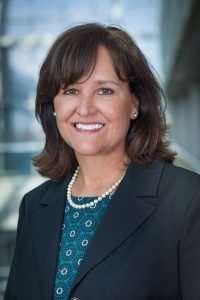
Joanie Martin, Chief Administrative Officer, Michelin
by Joanie Martin, Chief Administrative Officer, Michelin
Since the beginning of the COVID-19 pandemic, Michelin’s No. 1 priority has been the long-term health, safety and well-being of our employees, their families and the surrounding communities. As a Michelin employee for more than 23 years, I am especially proud of the resilience and agility demonstrated by our organization and employees during this unprecedented time.
As a sustainable mobility company, Michelin is focused on giving people a better way forward. This commitment has and will continue to guide our leadership team as we care for our customers, employees and business. With more than 20,000 employees in the United States and Canada, we are continuing to adjust to new ways of living and working during the pandemic recovery.
Throughout this crisis, I have been especially grateful for the unwavering support of our people who are the heartbeat of our company. Together, we have found new and innovative ways of working to move our business forward despite many challenges and a predominantly remote work environment. While a portion of our manufacturing sites were idled due to broad effects of the COVID-19 response, several of Michelin’s plants in the Upstate continue to operate at full or reduced capacity. Many of these plants are responsible for supplying tires for vehicles that are essential to keeping our country running, including ambulances, firetrucks, military vehicles and trucks that carry goods across the country.
In addition, our company is proud to play an active part in the ongoing battle against the COVID-19 pandemic, both by increasing the number of masks it donates to healthcare workers in the countries where it operates, and by providing masks to its employees across the globe.
Michelin North America recently donated 700,000 masks to hospitals, medical facilities and essential businesses with a critical need for these supplies. Donations were delivered to the medical communities in Alabama, Georgia, Florida, Indiana, Kentucky, North Carolina, Oklahoma, South Carolina in the U.S., and Nova Scotia and Quebec in Canada.
In response to the challenges faced by long-haul truck drivers from restaurant and rest stop closures, Michelin sites in Canada and the U.S., provided free lunches during the month of May as a way of expressing gratitude to these essential workers.
As we gradually ramp up our corporate offices and slowly bring employees back onsite after months of remote work, I have enjoyed seeing colleagues and collaborating in person. This ramp-up started with a small percentage of those employees returning to the office beginning last month. By following established state and local health guidelines closely, we are keeping employees’ health and safety as the highest priority concerning staffing and other operational decisions.
Across all of our sites, we’re continuing to follow CDC guidelines and a number of health and safety measures have been implemented: adjusting shift schedules to allow extra time for social distancing on arrival and departure; disinfecting every work station before and after each shift; employees participating in personal health screenings prior to facility admittance; measuring every task in the plants for 6-foot separation; providing ample stocks of masks for all employees, including those whose tasks don’t allow 6-foot separation; and adding staff and frequency for cleaning common areas like breakrooms and restrooms.
As we look to the future, Michelin is prepared to continue to meet the needs of evolving mobility behaviors as we serve our customers and communities through the recovery period and beyond. We look forward to strengthened partnerships and collaboration with our local community and business partners as we face unknown challenges together.

Jun 9, 2020 | Staying on Top, UpstateVibe365
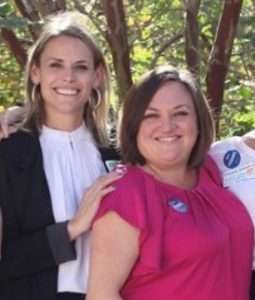
Kathryn Harvey and Mary Dell Hayes
by Kathryn Harvey, Communications Director of Census Open Innovation Labs, Co-lead of the Spartanburg Complete Count Committee, and Founder of Neue South Collective; and Mary Dell Hayes, Project Manager of SC Counts 2020 (on behalf of the United Way Association of SC) and Principal Consultant at StopGap Solutions
In the summer of 1787, our Founding Fathers came together to create the Constitution that our government is based on. In Article I, Section 2, they stipulated that a Census occurs every 10 years to reapportion federal representatives between the states. Since 1790, we have abided by this requirement.
As the years have progressed, funding from the federal government has been determined by the numbers from the Census. In fiscal year 2015, the Census drove over $11.7 billion back to the state of South Carolina from the federal government—that’s about $2,600 per person to support various assistance programs such as law enforcement, social services, public health, housing, and community development.
And in 2020, the Census decides how $800 billion dollars is distributed to towns and cities like ours here in the Upstate. If just 100 people in your area don’t participate, your schools, roads, and hospitals lose nearly $3 million dollars over the next 10 years.
In fact, we’re seeing the Census Count inform federal funding to our state in real time.
Census data is being used right now to determine the amount of relief received to support COVID-19 efforts and aid to support natural disasters like the tornadoes that hit earlier this year.
And if you need one more reason to amplify just how important the count of all the people in this country is every ten years…the Census is about REPRESENTATION. Census data is used to draw lines for U.S. House of Representatives, SC State House, and municipal government seats.
Filling out this brief survey is a way to ensure your place in history is marked, a critical need for many of our communities of color.
There is still time to complete your Census.
The 2020 Census launched on March 12, 2020 with the opportunity to complete this brief survey online and by phone for the first time in history. And with the current health crisis the self-response deadline has been extended to October 31st, giving us more time to get South Carolina counted in new and creative ways.
As of June 8th, SC is ranked 40th in the nation for census response—just below Texas. The top ten ranked counties in the state include Anderson in fifth place at 62.2%, Greenville in sixth place at 62.1%, and Spartanburg in ninth place at 60.2%. We can and must get every resident counted to ensure our state has the resources we need for the next 10 years.
Getting a complete count in SC is key to advancing equity in our state.
- The Census informs representation in congress. South Carolina gained a seat in 2010
- The Census influences where broadband is installed. This is even more critical now that we’ve seen the great divide grow greater between virtual learning, distribution of healthcare information, and more this year.
- The Census is an opportunity to let everyone know how and where our state is growing. How many children? Elderly? Students?
So how do we do this?
We live in a region that is rich with diversity. As such, the bulk of our efforts lie in helping our Hard-to-Count communities to complete the Census. HTC communities are defined as historically undercounted and underrepresented groups of people such as racial and ethnic minorities, millennials, young and mobile individuals, families with young children, and rural communities. Click here for an interactive Hard to Count Map.
We collaborate with our incredible community partners. The best way to get accurate information out about the importance of completing the Census is through trusted messengers and compelling collateral.
How can you help? Join the National Day of Action on June 17th.
Lt. Governor Pamela Evette has challenged each county to get 200 households to complete the Census, for a total of 10,000 households across SC—that’s a 2% increase across the state.
- Have your company pledge to count all its employees
- Share how you have completed the census on social media
- Plan a phone tree and reach out to folks you know may have questions about the census
- Talk to your faith-based organization about including it in their newsletter or bulletin
- Click here if you are interested in receiving periodic updates about Census 2020 efforts in Spartanburg County
Questions? Contact Mary Dell Hayes or Kathryn Harvey.


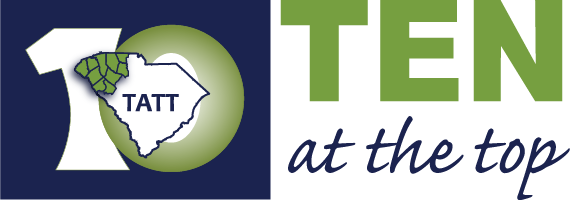


 Q: In this present moment, with the protests in the wake of George Floyd’s death and what feels like a much more significant outpouring of support for the African American community and Black Lives Matter by white Americans than we’ve seen before, has your group been doing anything new or different to get people talking in constructive ways?
Q: In this present moment, with the protests in the wake of George Floyd’s death and what feels like a much more significant outpouring of support for the African American community and Black Lives Matter by white Americans than we’ve seen before, has your group been doing anything new or different to get people talking in constructive ways?




